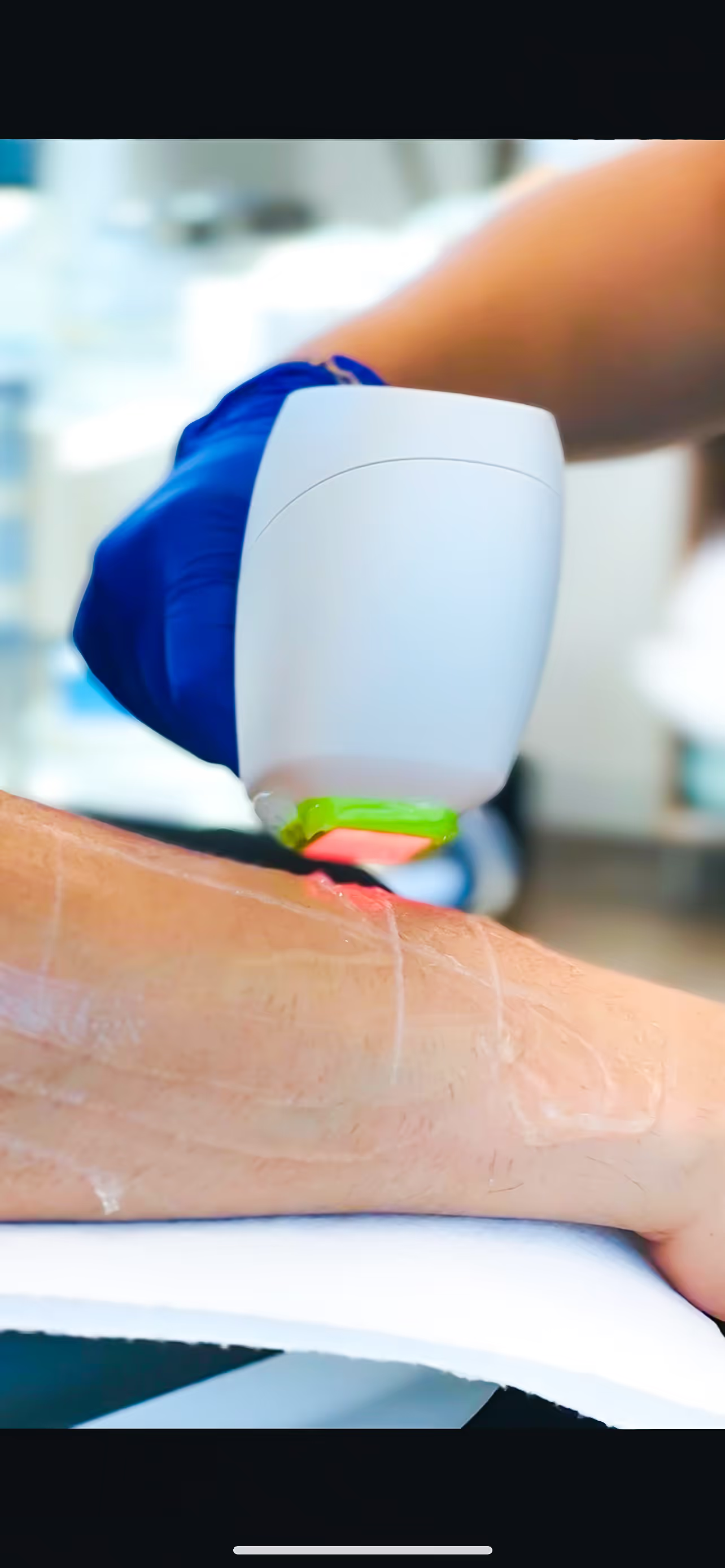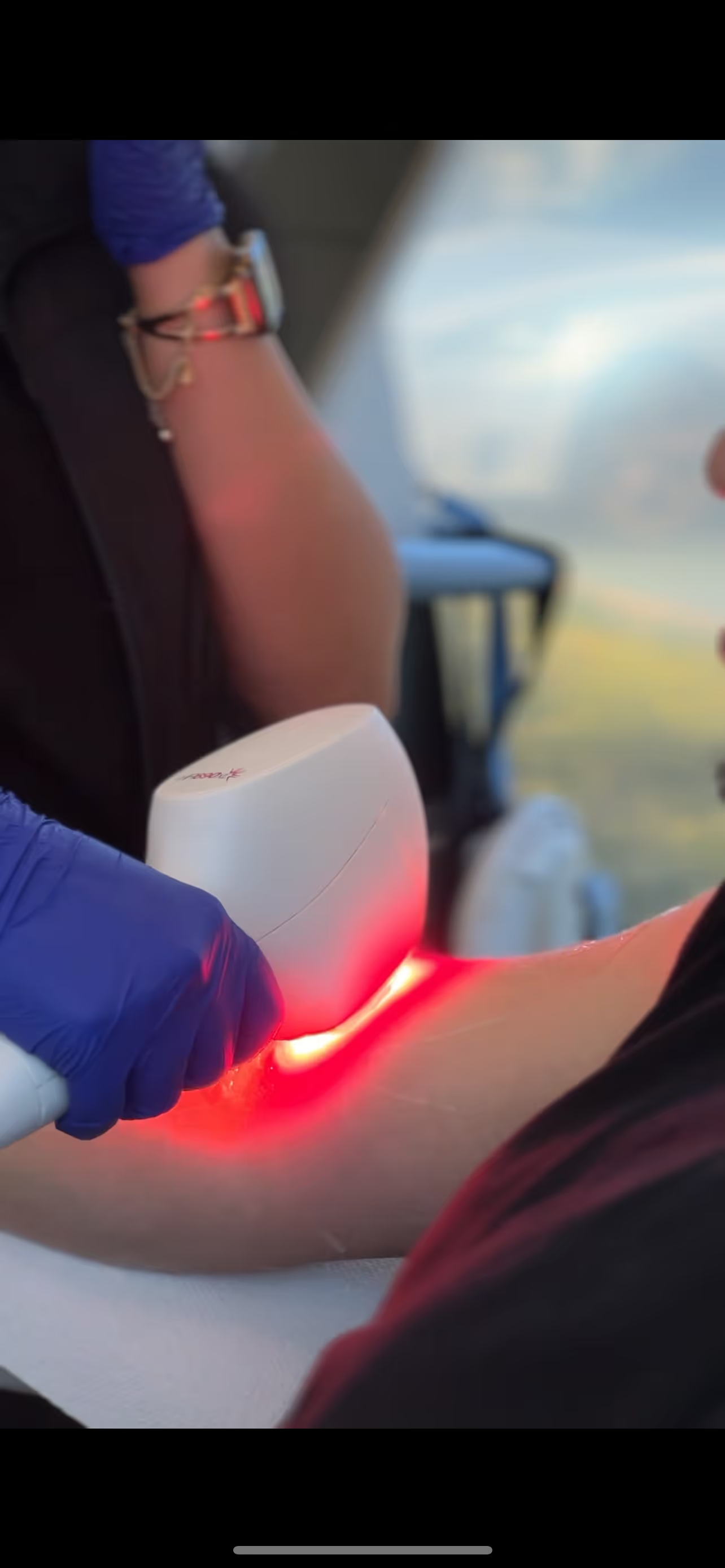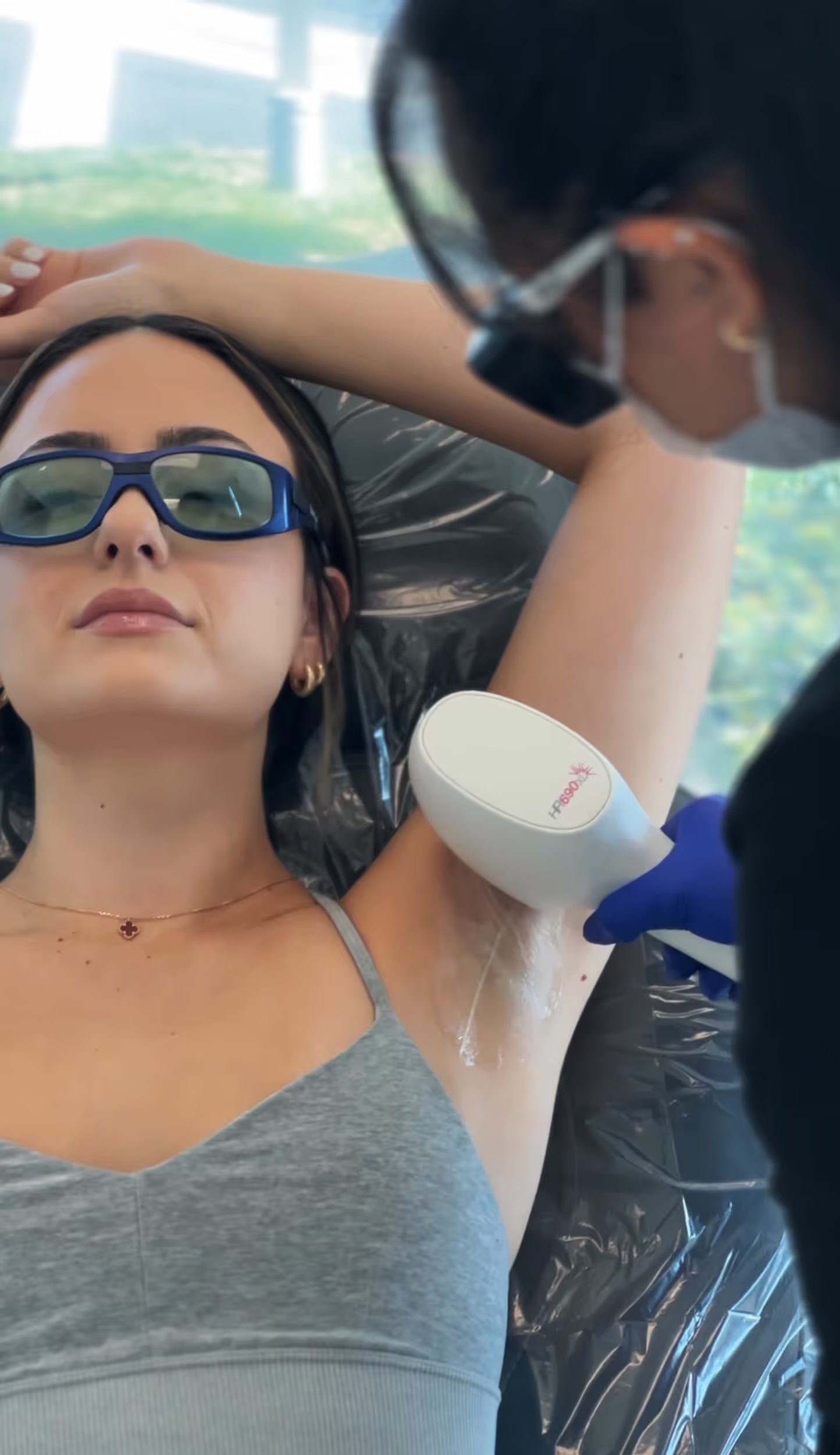Hyper Smooth®
Medical IPL and Laser Hair Removal Services
Goodbye Unwanted Hair
Hello Smoother You!
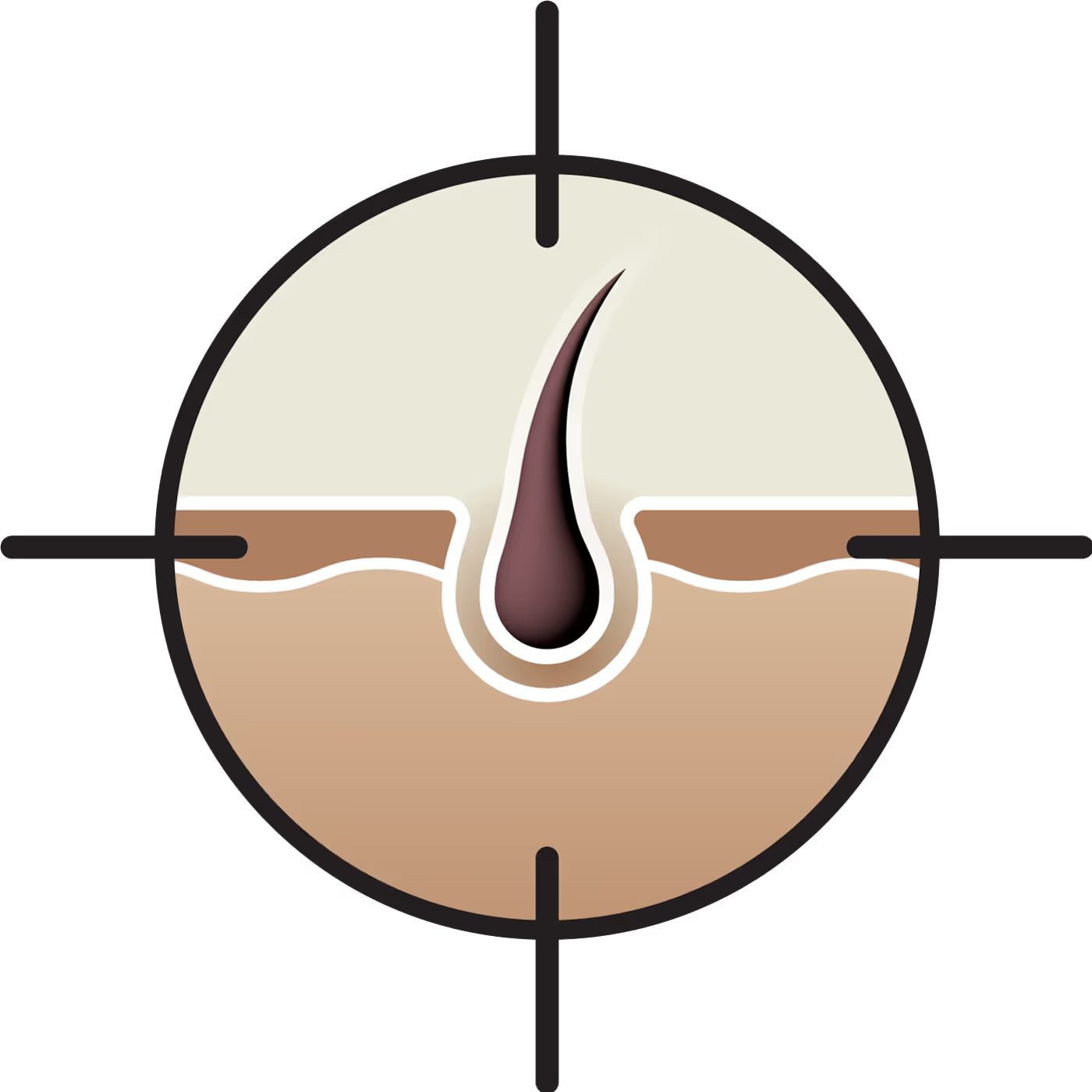
Goodbye
Unwanted
Hair
Hello
Smoother
You!
Tired of the never-ending battle with unwanted hair? With Hyper Smooth Hair Removal, you can enjoy smoother, hair-free skin without the constant hassle of shaving, razor burn, waxing, or plucking. Our advanced technology targets hair at the root, giving you longer-lasting results while prioritizing comfort and delivering an exceptional experience.
The Hyper Smooth Advantage
—
1. Comfort
When it comes to hair removal, a comfortable experience can make all the difference. Hyper Smooth Laser Hair Removal uses advanced technology to make your sessions quick, gentle, and effective. Avoid painful waxing, razor bumps, and post-shaving irritation with an approach that minimizes both discomfort and downtime!
2. Effectiveness
Clinicians and patients alike praise our laser hair removal treatments for delivering noticeable results. After completing a series of 6 to 10 treatments, patients typically report a significant reduction in targeted hair, leaving them with smoother, silkier skin.
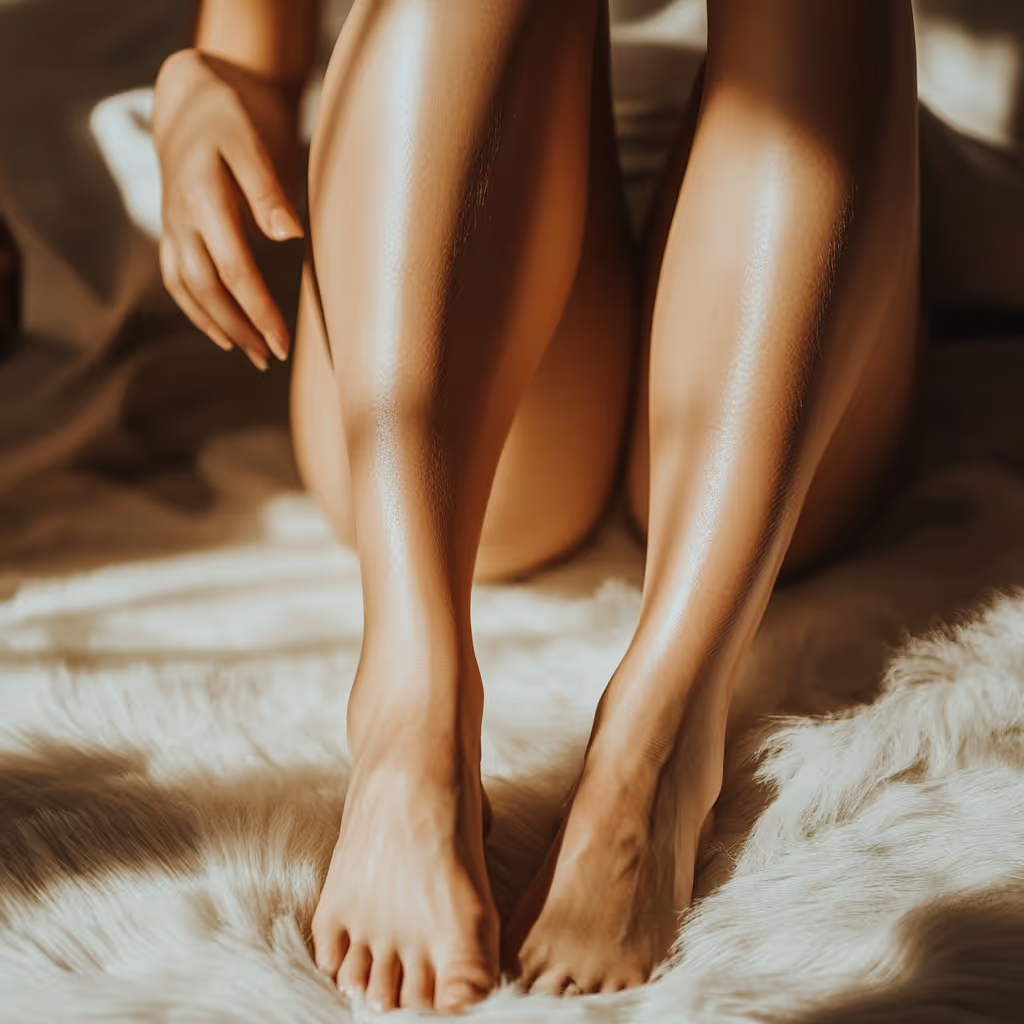

3. Keep It Smooth™
Our Vigor VIP members enjoy exclusive access to our Keep It Smooth program, designed to protect your investment in laser hair removal. With this program, members receive special discounts on periodic maintenance treatments, ensuring longer-lasting results.
Treatment Schedule for Longer-Lasting Results
Hyper Smooth Laser Hair Removal delivers optimal results when you complete an initial series of 6 to 10 treatments, spaced about 4 to 6 weeks apart. This schedule allows the laser to precisely target hair follicles at different stages of growth, enhancing the overall effectiveness of the initial series of treatments.
It's important to remember that results are NOT permanent. While you'll notice a significant reduction in hair growth after your initial series, maintenance treatments are essential to keep that smooth, hair-free look. Hair may gradually regrow over time, so ongoing sessions will be required to help preserve the results achieved from your initial series of treatments.
Key Benefits of
Laser Hair Removal
Take the First Step Towards Smoother Skin with Dr. Sculpt
Have questions?
Get answers
What is the difference between IPL and Laser Hair Removal?
IPL (Intense Pulsed Light) and Laser Hair Removal both target hair follicles to reduce unwanted hair growth. However, IPL uses broad-spectrum light, while laser technology uses focused beams of a single wavelength. This means laser hair removal is often more precise and effective for certain skin and hair types, though both methods provide excellent results.
How many treatments are typically needed for optimal results?
For best results, we recommend a series of 6 to 10 treatments, spaced 4 to 6 weeks apart. This timing allows us to target hair follicles in different growth phases, maximizing effectiveness with each session.
Is IPL or Laser Hair Removal permanent?
Both IPL and Laser treatments significantly reduce hair growth, often resulting in long-term smoothness. However, maintenance sessions may be needed every 6 to 12 months, as some hair follicles may regenerate over time due to hormonal changes or other factors.
Does IPL or Laser Hair Removal work on all skin tones and hair colors?
Laser technology has evolved to be effective on a wider range of skin tones and hair colors than ever before. However, darker hair with more pigment responds best to both IPL and laser treatments. Our specialists will assess your unique skin and hair type to recommend the best approach.
What should I expect during the treatment? Is it painful
Many clients describe the sensation as a mild tingling or a quick, warm pinch. To ensure comfort, we can adjust settings and apply cooling technology. Our priority is a smooth and comfortable experience tailored to your tolerance levels.
How should I prepare for my IPL or Laser Hair Removal sessions?
It’s best to avoid sun exposure, tanning products, and waxing before your appointment, as these can affect results. We recommend shaving the treatment area 24 hours before your session and avoiding skin irritants like exfoliants for a few days beforehand.
Are there any side effects or downtime after IPL or Laser Hair Removal?
The most common side effects are temporary redness or mild swelling, which typically resolve within a few hours to a day. There is no significant downtime, so you can resume your regular activities immediately as long as you avoid sun exposure. We provide aftercare tips to help ensure optimal healing and comfort. A more complete list of side effects is provided below. Schedule a consultation for more information.
Important safety information
Comprehensive List of Absolute and Relative Contraindications for Laser Hair Removal Treatments
Laser hair removal is generally safe for most people, but certain conditions or factors can make the procedure risky. These contraindications are divided into two categories: absolute and relative.
Absolute Contraindications
Absolute contraindications are conditions or factors that completely rule out the use of laser hair removal, as they pose a high risk to the patient. If a patient has any of these conditions, laser hair removal should NOT be performed.
Pregnancy: Laser hair removal is NOT recommended during pregnancy or nursing due to the lack of research on its safety for the mother and fetus.
Pacemakers or Internal Defibrillators: Patients with electronic implantable devices should avoid laser hair removal due to potential electromagnetic interference.
Area with Implants: Treatment areas that have superficial metal or other implants must be avoided.
History of Keloid Scarring or Hypertrophic Scars: Patients who are prone to keloid or hypertrophic scar formation have a higher risk of developing these scars after laser treatments, making them unsuitable candidates.
History of Skin Cancer or Suspicious Lesions: Laser hair removal should not be performed on patients with a history of melanoma, squamous cell carcinoma, or basal cell carcinoma, or on areas that have suspicious moles and lesions.
Photosensitive Conditions: Conditions like lupus or porphyria, or a history of photodermatitis, where the skin is highly sensitive to light, can lead to severe skin reactions.
Use of Photosensitizing Substances: Drugs such as isotretinoin (Accutane) within the past 6-12 months, certain antibiotics (e.g., tetracyclines), and certain herbs/supplements such as St. John’s Wort can increase the risk of severe skin reactions, including burns, blisters, and pigmentation changes.
Active Infection in the Treatment Area: Conditions like bacterial infections, herpes simplex virus (cold sores), warts, or fungal infections should be treated and resolved before undergoing laser hair removal.
Active Skin Diseases in the Treatment Area: Conditions such as psoriasis, eczema, vitiligo, or severe dermatitis make the treatment area more prone to complications and should be avoided.
Areas with Tattoos or Permanent Makeup: Laser hair removal should not be performed over tattoos or permanent makeup, as the laser can cause burns, pigment changes, and damage to the tattoo.
Relative Contraindications
Relative contraindications are factors or conditions that do not completely prevent laser hair removal but require careful consideration, modification, or additional precautions. The treatment may be possible under certain circumstances, depending on the patient's condition and the clinician's judgment.
Tanned or Recently Sun-Exposed Skin: Patients with recent sun exposure or tanning (either from natural sunlight, tanning beds, or self-tanners) are at higher risk of burns and hyperpigmentation. Treatment should be postponed until the tan has faded (typically 2-4 weeks).
Use of Self-Tanning Products: Self-tanners can increase the risk of burns and pigment changes. It’s recommended to discontinue use at least 2 weeks before the treatment.
History of Hyperpigmentation or Hypopigmentation: Patients with a history of post-inflammatory hyperpigmentation or hypopigmentation are at a higher risk of pigment changes. Patch tests are recommended.
Menstruation: While not a strict contraindication, some women may experience increased sensitivity during their menstrual cycle. It is often recommended to schedule treatments outside this time for comfort.
Use of Anticoagulants or Blood Thinners: These medications can increase the risk of bruising or bleeding. Such medications should NOT be discontinued without consulting with the prescriber. Written clearance from the prescriber of these medications is required before proceeding.
Active Acne or Use of Topical Acne Medications: Topical treatments like retinoids or benzoyl peroxide can make the skin more sensitive, increasing the risk of burns or irritation. Patients should discontinue these products for at least 1 week before and after treatment.
Recent Use of Chemical Peels or Microdermabrasion: Treatments such as chemical peels, microdermabrasion, or laser resurfacing in the treatment area should be avoided for at least 2 weeks before laser hair removal.
Diabetes: Diabetic patients may have slower healing and an increased risk of infection, particularly if the diabetes is poorly controlled.
Autoimmune Conditions Affecting the Skin: Conditions like scleroderma or other autoimmune diseases that affect skin health can increase the risk of complications.
Varicose Veins or Vascular Lesions: Areas with varicose veins, vascular lesions, or spider veins may require special consideration, as laser treatments can sometimes worsen the condition.
Breastfeeding: While laser hair removal is not contraindicated during breastfeeding, hormonal changes can affect hair growth patterns, making the results less predictable.
Hormonal Imbalances (e.g., PCOS): Patients with conditions such as polycystic ovary syndrome (PCOS) or other hormonal imbalances may have persistent hair growth even after completing a series of treatments. This doesn’t prevent treatment but may require more sessions.
Recent Waxing, Plucking, or Epilation in the Treatment Area: These methods remove hair from the follicle, which is necessary for the laser to work effectively. It is recommended to avoid these hair removal methods for 4-6 weeks prior to treatment.
Use of Steroids: Long-term use of steroids can thin the skin, increasing the risk of burns and other skin reactions. Consultation is necessary to determine the risk.
History of Seizures: While not a strict contraindication, the bright light from the laser may trigger seizures in photosensitive individuals. Protective eyewear and precautions should be used.
Final Considerations About Contraindications
Before proceeding with laser hair removal, the patient should carefully review all the absolute and relative contraindications provide here.
The patient is responsible for clearly informing the medical providers if they have any of these absolute or relative contraindications during initial consultation and should NOT proceed with treatment without confirming that the medical service provider is aware that the patient has one of more of these contraindications.
If the patient withholds such information from the clinical team, an adverse outcome with negative consequences is more likely and the patient shall indemnify and hold the medical provider—including its personnel—harmless for such an outcome. For patients with relative contraindications, a patch test may be recommended to assess skin sensitivity and reaction.
Potential Side Effects of Laser Hair Removal Treatments
Laser hair removal is generally considered a safe and effective treatment for reducing unwanted hair, but like any medical procedure, it can come with a range of potential side effects. These side effects can vary in severity from mild, temporary reactions to more serious complications, depending on the patient’s skin type, hair color, and the area being treated. The following is a comprehensive list of possible side effects, categorized by severity and likelihood.
Common and Mild Side Effects
These side effects are typically short-lived and resolve on their own within a few hours to a few days after the treatment.
Redness and Swelling (Erythema and Edema): The treated area may appear red and slightly swollen, similar to a mild sunburn. This reaction is usually temporary and may last a few hours to a couple of days.
Mild Pain or Discomfort: Some patients describe a sensation similar to a rubber band snapping against the skin during treatment. After the procedure, the area may feel slightly sore or tender.
Itching: Itching is a common response during and after the treatment due to the skin’s reaction to the laser energy. It usually resolves within a day or two.
Perifollicular Edema: This refers to small, localized bumps around the hair follicles. It’s a sign that the follicles have been targeted, and it generally subsides within a few hours.
Dry Skin or Flaking: Some individuals may experience dryness or slight peeling of the treated skin. Moisturizing the area can help alleviate this symptom.
Temporary Pigment Changes: Mild hyperpigmentation (darkening of the skin) or hypopigmentation (lightening of the skin) may occur but typically resolves within a few weeks.
Moderate and Less Common Side Effects
These side effects are less common and may require medical management if they occur.
Blistering or Crusting: Blisters or crusting can occur, especially with more aggressive laser settings or if the patient had recent sun exposure. These should be treated promptly to prevent scarring.
Burns: Minor burns can develop. These burns can range from first-degree to, in rare cases, second-degree burns.
Scabbing: Scabbing can happen if the skin forms a crust or hard layer after blistering. It should be left to heal naturally to prevent scarring or pigmentation changes.
Folliculitis: Inflammation of the hair follicles can cause small, red or pus-filled bumps, especially in patients who are prone to acne or have recently shaved the area. Topical antibiotics may be needed to treat this condition.
Infection: Although rare, infections can develop if the skin barrier is compromised. Signs include increased redness, pain, swelling, or pus. Proper aftercare can minimize the risk for an infection.
Bruising (Purpura): Small bruises can form in the treatment area, particularly in patients taking blood thinners or with certain skin types. Bruising typically resolves in 1 to 2 weeks.
Serious and Rare Side Effects
Serious side effects are rare but can occur, especially if proper aftercare instructions are not followed or if the patient has a contraindication.
Permanent Scarring: Poor aftercare can contribute to scarring, particularly if the skin is burned or if blistering is not treated appropriately at home. Scars may be permanent in severe cases.
Severe Changes in Skin Pigmentation: Permanent hyperpigmentation or hypopigmentation can occur, particularly in darker skin types or if the patient has a history of pigment disorders.
Paradoxical Hypertrichosis: Paradoxical hypertrichosis is a rare condition in which laser treatment, instead of reducing hair, stimulates new hair growth in the treated or adjacent areas. This is more likely to occur on the face and neck, especially in patients with darker skin tones. Regardless of the increase incidence of Paradoxical Hypertrichosis with a particular skin tone, there is no reliable way to predict who will develop this side effect. Furthermore, no precautionary measures can definitively prevent it. Paradoxical hypertrichosis remains an unavoidable risk associated with laser hair removal.
Allergic Reactions: Some patients may experience allergic reactions to topical anesthetics, numbing creams, or cooling gels used during treatment. Symptoms can include redness, itching, and swelling.
Reactivation of Herpes Simplex Virus (HSV): Laser hair removal can trigger an outbreak of cold sores (HSV-1) or genital herpes (HSV-2) in susceptible patients. Antiviral prophylaxis may be recommended for those with a history of herpes infections.
Ocular Injuries: Laser hair removal around the eye area can result in serious eye damage if proper protective eyewear is not worn correctly. Potential injuries include corneal burns, vision changes, and, in extreme cases, permanent vision loss.
Uncommon and Aesthetic Side Effects
These side effects may not pose serious health risks but can affect the aesthetic appearance of the treated area.
Textural Changes in Skin: Rarely, the treated area may develop textural changes, including rough or uneven patches. This is often a temporary condition but can persist if the skin is damaged.
Changes in Hair Texture: In some cases, the texture of remaining hair can change, making it finer or coarser. This is more likely to occur in areas that did not respond well to treatment.
Temporary Tattoo Fading: If laser hair removal is performed too close to a tattoo, it can cause temporary or permanent fading of the tattoo ink. This side effect is more common with darker inks.
Skin Sensitivity or Tingling: Some patients may experience lingering sensitivity or a tingling sensation in the treated area, particularly if nerve endings were affected. This sensation usually resolves within a few days to weeks.
Preventative Measures and Aftercare Tips
Proper patient selection, appropriate laser settings, and good aftercare are essential to minimizing side effects:
Be Aware of ALL Contraindications for Laser Hair Removal Treatments: Carefully review ALL the absolute and relative contraindications for Laser Hair Removal provided here to make sure none of the contraindications apply to you and/or your individual circumstances.
Inform your Laser Hair Removal Provider of any contraindications: When booking your initial consultation and/or during the initial consultation, clearly inform the medical providers if you have any absolute and relative contraindications for Laser Hair Removal listed here.
Do NOT proceed with treatment without confirming clinician awareness of contraindications: You should NOT proceed with treatment without confirming that the actual clinical personnel performing your treatment are aware and have taken into consideration any and all contraindications you have for Laser Hair Removal.
Avoid Sun Exposure and Tanning: Patients should avoid direct sun exposure and tanning beds for at least 4 weeks before and after treatment to reduce the risk of burns and pigment changes.
Use Broad-Spectrum Sunscreen: Apply a high SPF sunscreen to treated areas when exposure to sunlight cannot be avoided.
Follow Aftercare Instructions: Use soothing creams or aloe vera gel to calm the skin and prevent irritation. Avoid hot showers, saunas, and intense workouts for at least 3 days post-treatment.
Consult a Qualified Professional: Ensure that treatments are performed by a licensed and experienced provider who understands laser settings, skin types, and potential contraindications.
Understanding the potential side effects can help patients make informed decisions and help providers deliver safer, more effective treatments.

